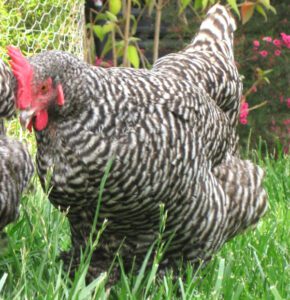The Osmanabadi goat is an Indian goat breed which is native to the Latur, Tuljapur and Udgir Taluks of Osmanabad district of Maharashtra. The name of this breed derives from it’s place of origin Osmanabad.
Osmanabadi goats are mainly spread in Ahamednagar, Latur, Parbhani, Osmanabad, Solanpur and many other districts of Maharashtra state. Today they are also found in Andhra Pradesh, Karnataka, Telangana and some other states in small amount.
Osmanabadi goat is suitable for both meat and milk production. But they are raised mainly for meat production, because of their finest quality meat. Among the registered goat breeds in India, the Osmanabadi goat has great demand in the market for their meat. Besides good quality meat, this breed also produce superior quality skin which has huge demand in the market.
Osmanabadi goat is called as farmers true breed. Because it makes more profits in less time and without expending too much for feeding and caring. The breed is gaining popularity throughout the India by the commercial meat goat producers.
Osmanabadi Goat Characteristics
Osmanabadi goats are medium to large in size. Their coat color varies. But in most cases the coat color of Osmanabadi goat goat is black. Although brown, white or spotted colors are also found. They have long legs with beautiful appearance. They have medium to long ear.

Most of the bucks are horned (about 90 percent), and does may be horned or polled. The does have small udder with small teats. On an average, adult Osmanabadi bucks weight about 36 kg and does about 30 kg.
Uses
The Osmanabadi goat is mainly raised as a meat goat breed. But they are also suitable for milk production. The breed is popular among the commercial meat goat farmers.
Special Considerations
Osmanabadi goat breed is noted for having high resistant power against diseases when vaccinated and also for their reproductive capacity. So it is a recommended breed for commercial goat farming business by the veterinary doctors.
The breed is easily adapted to any state’s climatic conditions in India. They are well adapted to cold, extreme hot or humid. They have high kidding capacity. Under good conditions, they breed regularly twice a year and twinning is common and triples are pretty rare.
Like most other goat breeds, Osmanabadi goat has a gestation period of 5 months. The breed is also good for milk production with an average daily milk yield of 0.5 to 1.5 kg for a lactation period of about 4 months.
Osmanabadi goat is an economical breed and can be fed on any type of farm fodder, grass, pulp of pulses and vegetables which are easily available. They don’t require any special fodder and feeding cost is pretty low.
On average, each Osmanabadi goat consume about 2-3 kg green feeds and about 0.5 kg dry fodder. They require less water as compared to other breeds. The breed is very suitable for stall fed system.
Osmanabadi goats can be a good choice for you, especially if you are a beginner in raising goats. Review full breed profile of Osmanabadi goat below.
| Breed Name | Osmanabadi | |
| Other Name | None | |
| Breed Purpose | Mainly Raised for Meat Production, But also Suitable for Milk Production | |
| Breed Size | Medium to Large | |
| Buck | About 36 kg | |
| Doe | About 30 kg | |
| Horns | Yes (most of the bucks are horned and does may be horned or polled) | |
| Climate Tolerance | All Climates | |
| Coat Color | Most common color is black and rests are brown, white or spotted. | |
| Good for Stall Fed | Yes | |
| Rarity | Common | |
| Country of Origin | India |







🐐 Explore the excellence of Osmanabadi goats at Raje Farms! 🌿 Our goats are bred for quality and resilience. Contact us at 9930877308 to bring these robust and productive goats to your farm. 🚜 #OsmanabadiGoats #RajeFarms #QualityLivestoc